Physical Address
304 North Cardinal St.
Dorchester Center, MA 02124
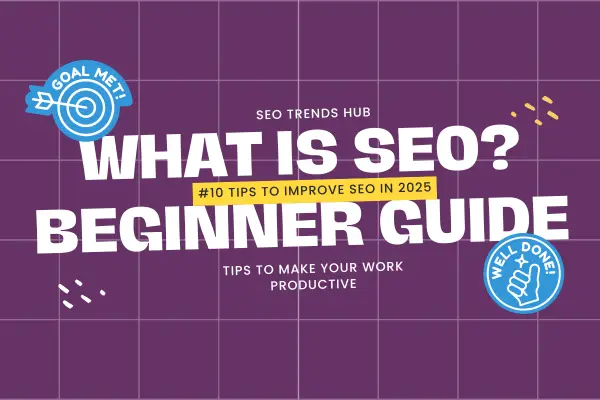
Do you know that 93% of online experiences begin with a search engine? Not knowing about SEO in today’s digital world isn’t an advantage; it’s a need. Search Engine Optimization or SEO is the superpower that can turn your online presence from invisible to irresistible. No problem, whether you are a business owner, blogger, or digital marketer, being well aware of the SEO details will be your key to success in web marketing – either hiding in the abundance of the digital realm or being at the top of the page on Google.
Search Engine Optimization (SEO) is the strategic practice of optimizing digital content to improve its visibility and ranking on search engine results pages (SERPs). At its core, SEO is about understanding what people are searching for online and ensuring your content meets those needs while signaling to search engines that your website is the most relevant and authoritative source for that information.
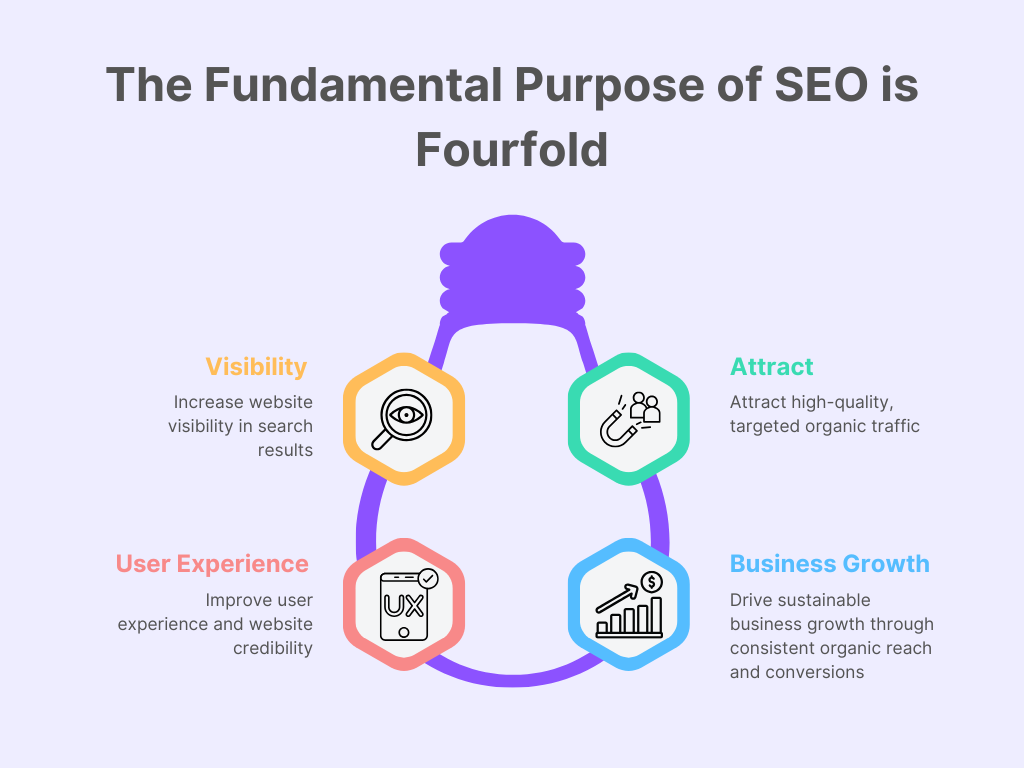
This section is for those who are newbies to SEO, so if you know the basic terms, you can skip this section and move to the next topic. Before you start doing SEO, first you must know the common terms that are used around the SEO world. As a specialist industry, SEO has its vocabulary, a set of acronyms, phrases, and concepts that may seem overwhelming at first glance. Think of these terms as the map and compass that lead you across the entire digital world.
Here’s a comprehensive list of basic SEO terms with their meanings and purposes:




















Just like doctors check your physical health through tests like heart rate, blood pressure, and temperature, you should measure Core Web Vitals if you think of them as the health of your website. The three main metrics that Google uses to evaluate whether your website is healthy and user-friendly are:
Picture yourself while you unfold a book. How fast you can count with your eyes to perceive the main idea, words, and text? There is nothing like the feeling of waiting for a dish to be presented at a restaurant. Google is hoping for this to be done in 2.5 seconds or quicker. For instance: Are you able to view the product image in the blink of an eye after you go to Amazon?
Press the button or link. How fast does it come back? It’s as if you push the elevator button and wait for it to go on. Needs to be done in 100 milliseconds (that’s fast!). For example: If you hit “Add to Cart” on a store website, the server responds in a few blinks.
Does your page stuff keep jumping around while it’s loading? It’s like reading a newspaper when someone is pushing your table. The things should stay the way they are and not be jumpy. For instance, Did you ever click on a button, then an ad loaded and shifted the button? That’s bad CLS!
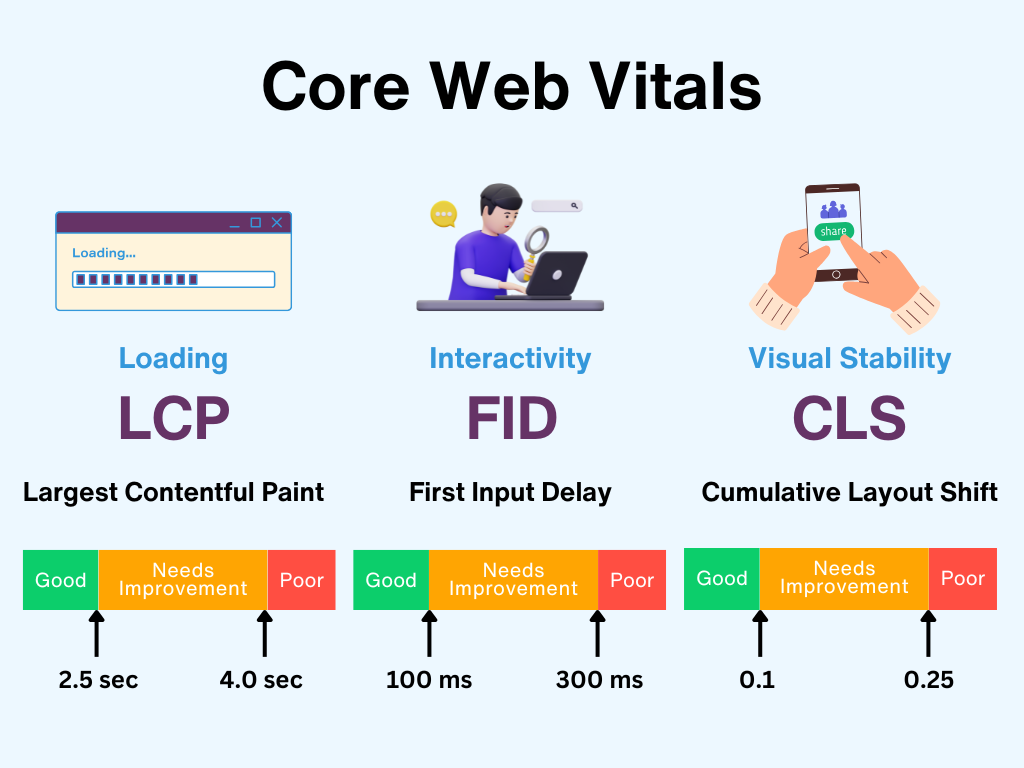
Go to https://pagespeed.web.dev/ in your browser. You’ll see a simple search bar where you can enter any website URL.
Just paste your website’s URL and click “Analyze.” PageSpeed Insights will test your website in both mobile and desktop versions. The test usually takes about 30-60 seconds to complete.
Performance Score (0-100):
Core Web Vitals Results: You’ll see three main metrics with color coding:
Field Data:
Lab Data:
For each Core Web Vital:
LCP (Largest Contentful Paint):
FID (First Input Delay):
CLS (Cumulative Layout Shift):
PageSpeed Insights provides:
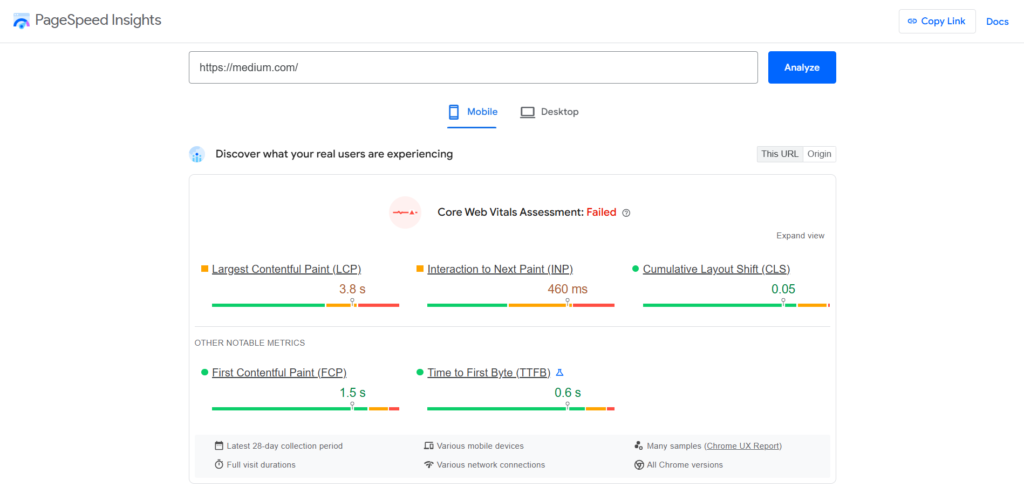
Nowadays, virtual platforms and systems have set the bar high for digital marketers, making it vital to have a working knowledge of SEO and the implementation of E-A-T. The first medic algorithm update in 2018 by Google, that too grabbed peoples’ attention, was the sky falling, which put the E-A-T at the center. Content provided by “experts who are passionate about what they do and who are willing to do some of the work themselves” should be good enough for the users who are looking for solutions or explanations. Thus, E-A-T is largely the basis of ranking.
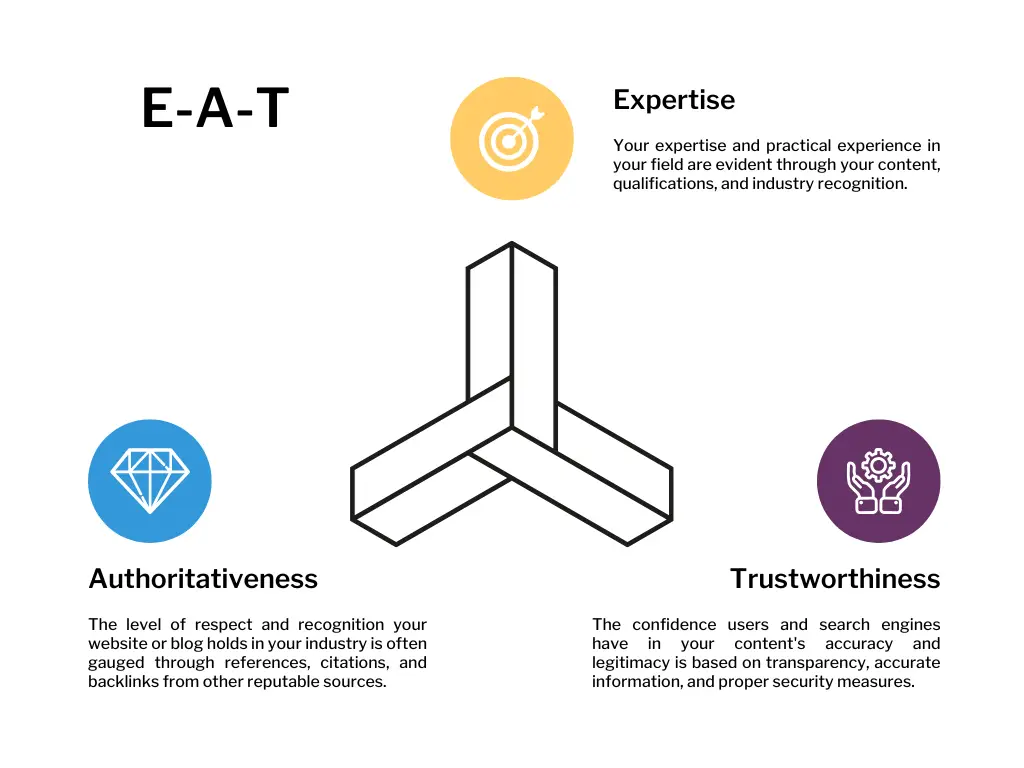
Expertise starts with deep, thorough content that showcases your knowledge. Here’s how to effectively demonstrate expertise:
Create comprehensive, well-researched content that goes beyond surface-level information. Instead of writing a basic 500-word article, develop in-depth guides that cover every aspect of your topic. For example, if you’re writing about digital marketing, don’t just define terms – explain the strategies, provide real-world examples, and share actionable steps.
Include case studies, original research, and data from your own experience. Share specific examples from your professional journey, detailing both successes and failures. This practical experience is invaluable for building expertise.
Author credibility is crucial for E-A-T. Develop robust author profiles that include:
Create dedicated author bio pages on your website that showcase your expertise. Keep these updated with your latest accomplishments, publications, and contributions to your field.
Strengthen your content by incorporating insights from recognized experts in your field. This involves:
When citing experts, always link to their original works and provide proper attribution. This not only builds trust but also creates opportunities for networking and potential backlinks.
Back your claims with solid data and research:
While E-A-T isn’t a direct ranking factor, you can track its impact through:
Schema markup is a powerful SEO tool that helps search engines understand your website’s content more effectively. It’s essentially a form of structured data that creates an enhanced description (commonly known as a rich snippet) which appears in search results.
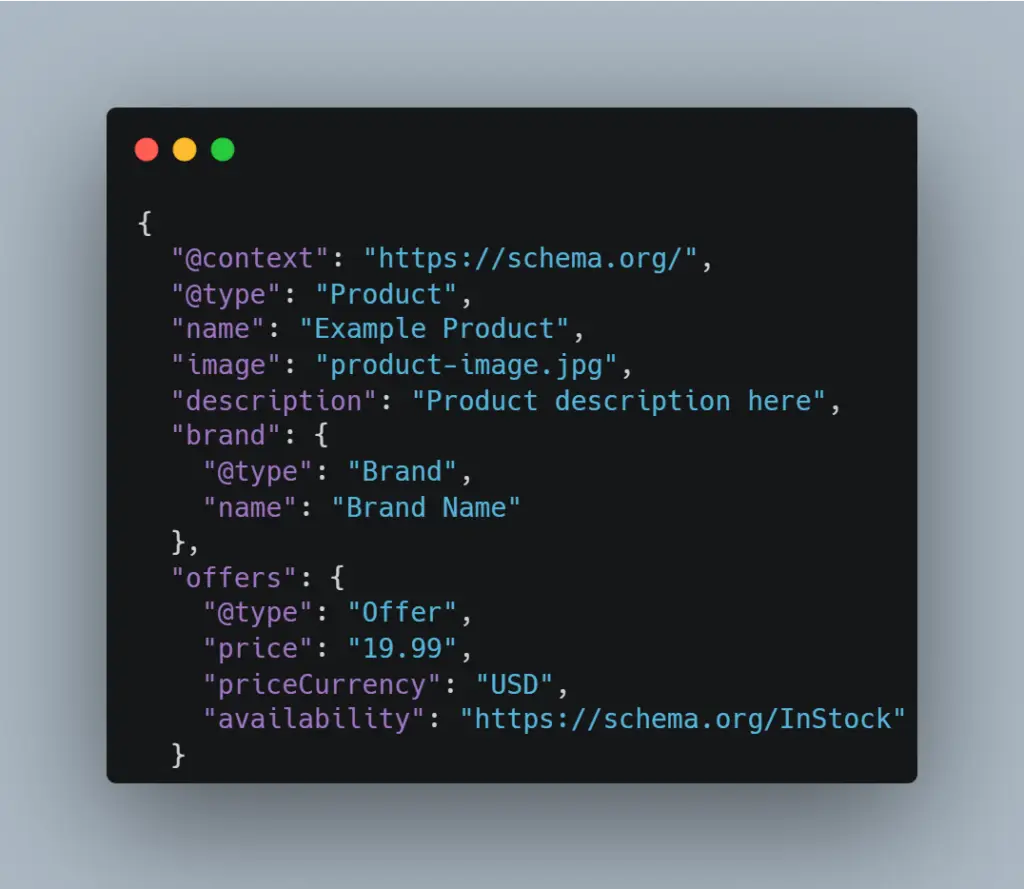
Key Product Schema Elements:
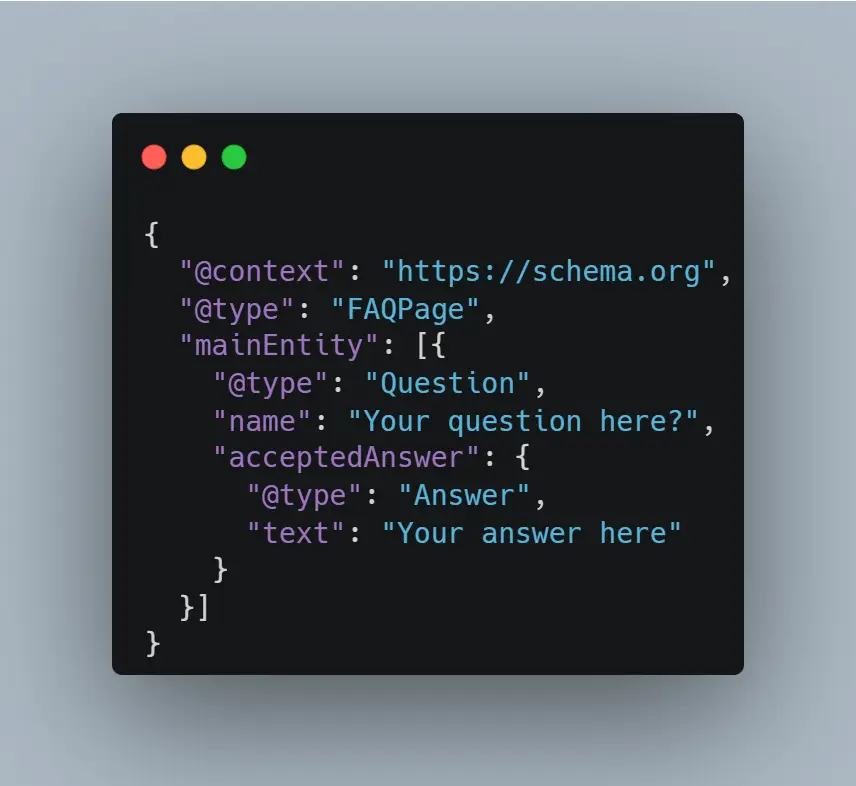
Benefits of FAQ Schema:
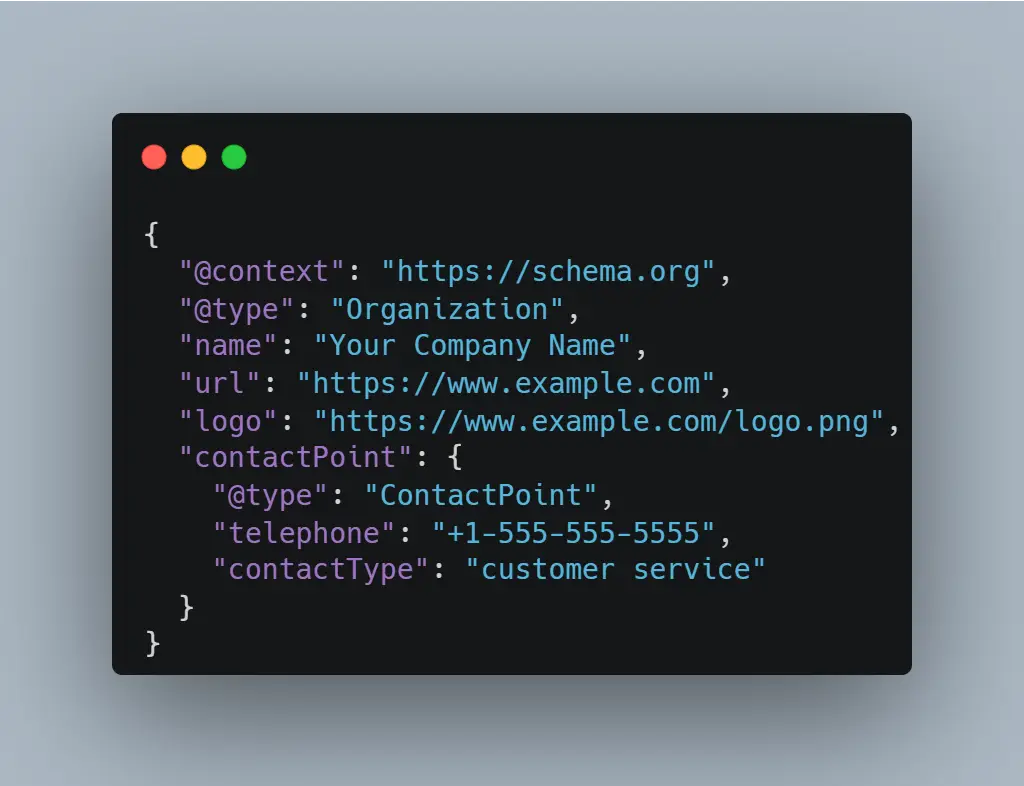
In today’s digital landscape, mobile optimization isn’t just an option—it’s essential. Google primarily uses the mobile version of your website for indexing and ranking, making mobile optimization crucial for SEO success.
Example CSS for Responsive Design:
Speed Optimization Checklist:
Best Practices:
Checklist for Mobile Rendering:
A linkable asset is a piece of content that naturally attracts backlinks because of its value. Examples include:
Outreach campaigns involve contacting website owners, bloggers, or influencers to promote your content or request backlinks.
Guest blogging allows you to contribute content to reputable websites while gaining backlinks.
Broken link building involves finding broken links on other websites and suggesting your content as a replacement.
Focus on natural language patterns that match how people speak with voice assistants. Use question-based phrases like “how do I” or “what’s the best way to” instead of traditional keywords.
Create comprehensive FAQ sections that directly address common user queries. Keep answers concise (40-50 words) and use complete sentences suitable for voice responses.
Example FAQ: “How long does shipping take?” “We deliver most orders within 2-3 business days for local addresses, and 5-7 days for nationwide shipping. International orders typically take 10-14 business days to arrive.”
Write content conversationally, avoiding technical jargon. Use clear transitions and maintain a natural flow that voice assistants can easily interpret.
Writing for voice search means embracing natural language patterns. Your content should flow conversationally while maintaining professionalism. This includes:
Since voice assistants often pull answers from featured snippets, optimizing for these “position zero” results becomes crucial. Structure your content to directly answer specific questions in the first few sentences, followed by more detailed information. Use clear headings, concise definitions, and step-by-step instructions where appropriate. Format your content with proper HTML tags and structured data to increase your chances of being selected for featured snippets.
Many voice searches have local intent, so optimize for local queries by:
A well-optimized Google Business Profile serves as your digital storefront in local search results, acting as a 24/7 virtual receptionist for your business. It requires consistent attention and updates to maintain its effectiveness and attract local customers. Your GBP shouldn’t just contain basic information – it should tell your business’s story through photos, posts, and engaging customer interactions.
Key Points:
Building a strong review profile is crucial for local SEO success and customer trust. Reviews serve as social proof and significantly influence your local search rankings. The key is not just collecting reviews but managing them effectively through thoughtful responses and systematic collection processes.
Key Points:
Creating locally-relevant content establishes your business as an integral part of the community while improving your visibility in local search results. This content should reflect your understanding of local needs, challenges, and opportunities. Focus on creating valuable resources that serve your local audience while naturally incorporating location-specific keywords and information.
Key Points:
Schema markup is the technical foundation that helps search engines better understand your local business information. While invisible to users, this structured data plays a crucial role in how your business appears in search results and can significantly impact your local search visibility.
Key Points:
Building a strong local citation profile requires consistency and attention to detail across all online platforms. This extends beyond basic directory listings to include meaningful partnerships and community involvement that generate authoritative local backlinks.
Key Points:
With most local searches occurring on mobile devices, your website must provide an excellent mobile experience. This includes fast loading times, intuitive navigation, and easy access to contact information and directions.
Key Points:
Success in local SEO requires constant monitoring and strategic adjustments based on performance data. Track key metrics regularly and use this information to refine your approach and maintain competitive advantage in your local market.
Key Points:
Active social media engagement helps reinforce your local presence and creates additional touchpoints with your community. Share local content, engage with other businesses, and use your social platforms to showcase your community involvement.
Key Points:
A well-planned site architecture serves as the foundation for both user experience and search engine optimization. Think of your website as a well-organized library – every piece of content should have a logical place and be easily discoverable. Good site architecture reduces the number of clicks users need to reach their desired content while helping search engines understand the relationships between different pages and content sections.
Your website’s navigation should act like a roadmap, guiding visitors logically through your content. The main navigation menu should highlight your most important pages and categories, making them immediately accessible from any page. Consider implementing a “mega menu” for sites with extensive content, allowing users to see multiple levels of navigation at once. Keep your navigation consistent across all pages and ensure that mobile users can easily access all navigation options.
Interactive elements in navigation should be intuitive and responsive. Dropdown menus should be easy to use on both desktop and mobile devices. Include visual cues that help users understand where they are on your site and what options are available to them. Consider adding search functionality within the navigation for larger sites, allowing users to quickly find specific content.
Breadcrumb navigation serves multiple crucial purposes in your site architecture. It shows users their exact location within your site’s hierarchy and provides an easy way to navigate back through parent categories. Implement breadcrumbs that reflect your site’s actual structure rather than the user’s browsing history. This helps both users and search engines understand the relationship between pages and content sections.
Make sure your breadcrumbs are clickable and use clear separators between levels. Implement schema markup for breadcrumbs to help search engines better understand your site structure. Consider using visual elements that make breadcrumbs stand out while maintaining a clean design that doesn’t overwhelm the page.
Your URL structure should reflect your site’s hierarchy and content organization. Create URLs that are both human-readable and logical, using keywords naturally where appropriate. Avoid unnecessary parameters or numbers that don’t provide value. Keep URLs relatively short while ensuring they clearly indicate the content’s topic and location within your site structure.
A well-structured piece of content serves both your readers and search engines effectively. Think of your content structure as the skeleton that holds everything together – it needs to be strong, logical, and well-organized. Good structure helps readers quickly find the information they need while helping search engines understand the hierarchy and relationships within your content.
Headers create a clear roadmap through your content, establishing relationships between different sections and subsections. A proper header hierarchy starts with your H1 (main title) and flows logically through H2s, H3s, and beyond as needed. Each level should support the ones above it, creating a natural content flow that’s easy to follow.
Key Points:
Keywords should flow naturally within your content structure, appearing in relevant headers and body text without feeling forced. The goal is to maintain readability while signaling relevance to search engines.
Key Points:
Subheadings break up your content into digestible sections while providing additional context and information. They should be descriptive enough to stand alone while fitting naturally into the overall content flow.
Key Points:
Modern readers often scan content before deciding to read in detail. Making your content scannable helps readers quickly find relevant information and decide if your content meets their needs.
Key Points:
The visual presentation of your content structure matters as much as the organization itself. Consider how your content appears on different devices and ensure it remains easy to navigate regardless of screen size.
Key Points:
Your content should flow logically from one section to the next, creating a natural progression that keeps readers engaged. Each section should build upon previous information while moving toward a clear conclusion.
Key Points:
The technical aspects of your content structure affect both user experience and SEO performance.
Key Points:
Regular analysis helps ensure your content structure effectively serves your audience.
Key Points:


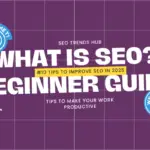



Very useful article, thanks for sharing!
Very nice post. I just stumbled upon your blog and wanted to say that I have truly enjoyed browsing your blog posts. In any case I will be subscribing to your feed and I hope you write again very soon!
F*ckin’ awesome things here. I’m very glad to see your post. Thanks a lot and i am looking forward to contact you. Will you please drop me a mail?
I have been absent for a while, but now I remember why I used to love this website. Thanks , I will try and check back more often. How frequently you update your web site?